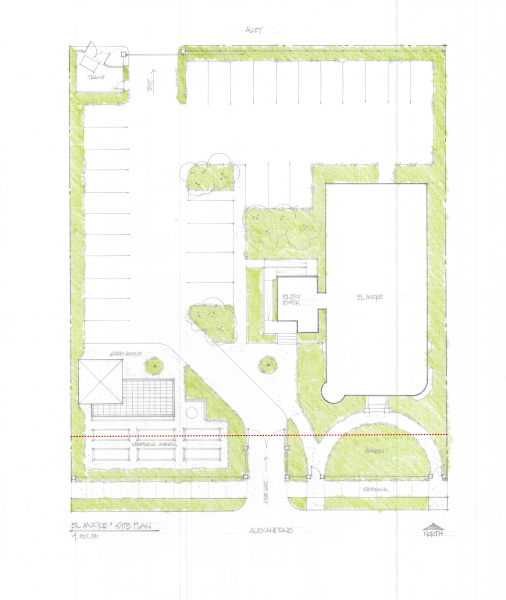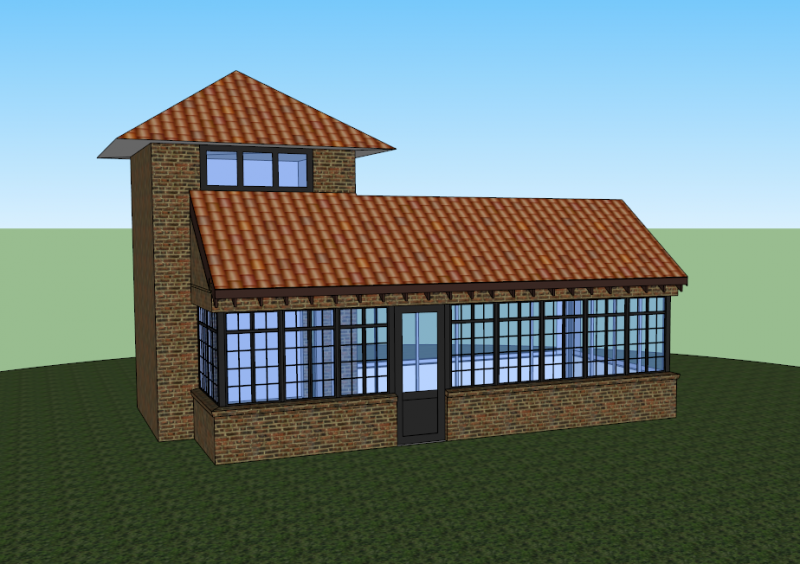One of our early goals in creating a sustainable residential community at the El Moore was to provide an opportunity to residents to participate in growing their own food. The nearby North Cass Community Garden has shown that there is a strong demand for garden space in Midtown and that community garden space can not only support growing vegetables but also provides an activity that brings people together outdoors and builds relationships. When studying where this activity could best be located on our site it was determined that this activity should be brought forward, towards the sidewalk and it quickly became clear that this could also help solve another problem we were having with our plans…. How to effectively screen the required parking area from the street.
At one time, our block of Alexandrine, just like every block in the neighborhood was completely lined with 
With the decision made to build a greenhouse task now was to design a structure that would compliment the historic architecture of the block in both design and quality of materials. We strongly believe that a greenhouse built from all new materials would struggle to settle into the block even with good design and so we once again we began seeking used material to complete our build out.
Of course each of these material have their own stories about their history and the relationships that were formed through the process of working with others to ensure that these various pieces of Detroit’s built history have a renewed life outside of a landfill, here is a list of some of those materials, their individual stories to follow in future posts.
The Roof:
Saved during an extensive renovation of a large home in Boston Edison. The original clay tile of this home required significant repair and the city’s historic district commission gave permission for an appropriate replacement. We worked with the home owner to deconstruct the remain undamaged sections and will be installing it our our greenhouse.
The Windows:
Another building that is undergoing an extensive restoration in the North End was going to be shedding their original inefficient steel casement windows for a historic reproduction that will offer much better energy efficiency. Because our greenhouse is not a conditioned space, the inefficiency of the window was less of a concern and we worked with the building’s owners and Turner Restoration to reclaim the windows and prepare them for our greenhouse.
The Exterior Facade:
Structural Wood Framing:
We have procured all of the wood framing for the roof and side walls from Architectural Salvage Warehosue Detroit. This group is a leader in establishing the deconstruction industry in Detroit as an alternative to traditional demolition.

